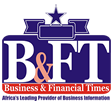…the pathway for organisational change and leadership
Imagine an elephant running wild in a dense forest, with its rider desperately trying to maintain control with the path ahead obviously unclear, possibly leading to a dead-end, how can the rider steer the elephant safely to a new promising land?

Again, imagine as a company you have been very product-centric and that your technology has been leading edge and customers buy your products because it leads the market in innovation. Now, competitors are catching up and even surpassing your innovation and your executives have decided the company must become more customer-centric. What will you do as a business? Obviously, this business requires new strategy changes to the organization and its culture, which will demand significant change in leader, workforce behaviour and mindset. Besides, the situation will require an enterprise-wide transformational change effort.
Traditionally, when people think change, they consider analysing, thinking and then change. Rather, change usually occurs through seeing, feeling and then change. Although the progress and impact of any team or organization change effects are dependent on successful change implementation, from hindsight experience, we realize managing the individual is undeniably intricate and as for humans in general, there is always resistance when it comes to change agenda.
Change, which brings a lot of feelings require same the motivation to drive these feelings into impacting the desired change to see success. Obviously, the change framework which involves the elephant, rider and path, is a simple yet powerful model for individual and organisational change situations which simplifies the effective pathways through which organisations ought to manage change, emphasizing the need to address both rational and emotional aspects of the change within the contextual expectation for growth and performance.
Drawing from the two scenarios of change above and other real-world examples already confronting several organisations, it is imperative to take note that, to make change stick, one must effectively manage the rider, the elephant and the path. How is this done? To empower the elephant to dance is to stay clear in defining the path for the change, ensuring there is motivation and abundant demonstration of empathy and emotional connectivity by the rider with the elephant.
The question is, how does the rider motivate the elephant to dance the song of change? Let’s talk about ‘Empowering the elephant to dance”
The path for change
Have you ever seen any transformational change efforts that miss the mark by reducing the effort to a series of initiatives without attending to the culture of the organization? People take cues from others in every group, therefore to encourage conformity of behaviour and in alignment with the new pathway, it is expedient to make the change a collective effort and an integrated part of the organisations culture.
Again, it is said that, when situations change, behaviours change as well. For change cannot be successful except that the collective individual behaviours, interest and initiatives are managed. In doing so, attention ought to be given to the spirit and mindset of the elephant (individuals or leaders) and the culture of the organization which most critically ought to be approached in an integrated holistic way.
Besides, to enforce a new culture of change is to remain constant as an organization in engaging in communication, creating a workforce change agents capable of championing efforts, sharing of leadership power and decision-making alignment with the new culture, cross-boundary collaborations, greater business transparency, mindset and behaviour transformation through the impacts of training.
Arguably, without a clear vision of the destination, the change will not happen. The elephant stands to follow the path of least resistance when the rider and the elephant fail to corporate. Both must know what direction to head.
The Rider (the rational self) on change journey
Sitting on top of the elephant is the rider, who holds the reins and appears to be the leader of the team or organization. The rider represents our rational side and loves to contemplate and analyse things with much focus on addressing problems.
The Ride is a logical decision maker, who takes care of all the analysis and thinks about the long term. He or she is analytical, a long-term planner, demonstrates direction, strategy and a problem-solving attitude. Despite his strengths, sometimes the rider could be overly analytical, indecisive, thinks he is leading and in control because he is holding the reins yet could act and be seen to be slow.
However, the rider’s control is precarious because the rider is so small relative to the elephant. Anytime the enormous elephant and the rider disagree about the direction to take, the elephant may easily topple the rider and the rider may lose focus and eventually change the plan. He gets frustrated by uncertainty and when exhausted.
Often what seems like resistance by the elephant is simply a lack of clarity. The rider needs a crystal-clear vision of the outcome and how to get to it. As a rider, your rational self tend to deliberate and analyse situations and if the rider is not sure where to go or how to get there, he or she will sit atop the elephant going around in circles. Providing as much clarity about the change as possible is the main aim of appealing to the rational self and the emotional self of the elephant to see success.
The Elephant (the emotional self) on change journey
There is an overpowering aspect of the elephant which is an emotional self. The elephant requires moral purpose and stories to remain strong for the change. It acts on passion, impulse and demonstrates sympathy, love, loyalty, and compassion. She (elephant) is seen to have enough energy, drive, determination, and an instinctive character which makes it get things done with love and power.
The elephant is easily spooked and hates doing things with no immediate benefit. It is stubborn though but needs reassurance to align else it is quickly demoralized.
On taking a project assignment for instance, the elephant goes by saying that knowing is not enough but about how one feels about his role on the project. Is the employee fully aligned with the project’s goals and his assignment? Does he consider himself to be a valued member of the team? Is he aware of the impact his missed deadlines have on the entire team’s performance?
According to the rider-elephant framework, the key to effective change is to get the elephant and the rider moving together in an agreed direction. The rational rider can plan though, but the elephant ought to be driven by emotion and instinct and that is the only way to align the two to move on the path of change in success. If this is not done, the elephant overpowers the rider and overthrows the plan for change.
Managing the Elephant and the Rider to align with change path
As already emphasised, the key to effective change is getting the elephant and the rider moving together. Changes often fail because the rider simply cannot keep the elephant on the road long enough to reach the destination. The elephant’s hunger for instant gratification is the opposite of the rider’s strength, which is the ability to think long-term, to plan, to think beyond the moment.
The rider who represents the rational self and the elephant, the emotional self has the path representing the environment or situation. The question is, why do so many people and organisations fail to change despite their best intentions? To understand this, one needs to imagine the elephant trampling through the forest while the rider clings on for dear life. Clearly, the rider has little chance of controlling the huge elephant and this vividly illustrates how emotions can easily derail even the most determined riders armed with rational thinking.
Nonetheless, to make progress toward a goal, whether it’s noble or not requires the energy and drive of the elephant. And this strength is the mirror image of the rider’s great weakness. The rider tends to overanalyse and over think things. A reluctant elephant and a wheel-spinning rider can both ensure nothing changes. But when elephants and riders move together, change can come easily.
Though, the elephant and the rider both need a path that is well-defined, the more you help the rider to make decisions automatically, the lower the resistance to change by the elephant. To effectively manage the elephant (employee) and drive it successfully towards change is to appeal to it by demonstrating the rider’s ability to effective build rapport with the elephant. By rapport, the rider ought to show care towards the employee for who they are and not to indiscriminately show bias either by qualifications, skills, loyalty etc.
Oftentimes, learning and matching what excites people in their personal goals with aligned impacts of organisational change agenda eases resistance from the elephant. Besides, creating a good work environment devoid of tension and conflict, will allow for concentration warranting the elephant’s efforts to walk the path for change.
Managing organisational change, asking the right questions
In a typical organisation, the elephant is present at the board, executive Leadership, divisional and user group levels. At these levels of organisational influence, majority of change practitioners will attest to the point that they often struggle to overcome the power of the elephant.
It is always important that, in shaping the path for organization change, we consider tweaking the environment, build new habits and rally the herd.
To ensure this is done successfully, one needs skills, focus and a clear path. Here, meaningful progress is underpinned by clear and unambiguous processes to achieve the desired outcome. Remember, even best-meaning change management initiatives at work often fail because the implementation process was cumbersome.
How then do we keep the change going? This demand tweaking the environment, look at the path and making changes that affect behaviour as well as looking for the bottlenecks in operations for instance and finding ways to remove or address them.
Remember to ask the question, what will keep the change going to understand how the rider and the elephant will continue working together. When task become habits and people follow the lead of others, the rider is able to rally the herd especially in new or ambiguous situations. Therefore, to appeal to the people, give concrete actions, make the right path easier and the wrong harder, encourage supporters to be seen and be vocal, replicate solutions that are working already and make vivid picture of near-term future show that it is possible.
Motivating the Elephant to dance?
To motivate the elephant to dance, three questions ought to be answered. First, how will the elephant change, when is the change to start and why is the change needed? The elephant needs the motivation to play along.
In a change situation where the rider is always outmatched by the elephant, it is best to get the elephant excited about the change and connect a feeling with the proposed change. Also remember that, big change can feel demoralizing to the elephant, so find a way to show progress towards the goal early on. Besides, to appeal to the elephant for the need for change, find an identity that makes the elephant (employee) feel strong and empowered to dance to the song of change. Motivating the elephant…
Requires finding the Elephant’s feelings
Motivating the elephant is accomplished by finding the feeling, shrinking the change, and growing the people. Shaping the path involves tweaking the environment, building habits that reduce the rider’s burden of decision-making, and rallying the herd to create momentum. The best place to start is to find bright spots examples of successes that may already exist in the team that can serve as anchors for the change.
Following the bright spots and exploring, one can use any learnings from them to apply to the change situation. In this case, the bright spots may mean that you find team members who excel in similar situations, and glean insights from their success.
Managing the path clear focus and objective
When ambiguity remains the biggest enemy of the rider, he is sure to need a ‘destination postcard’ that helps to visualise change well. Recognizing the need to satisfy the rider with clear destination, there is equally the need to make the elephant feel the need for change by appealing to its emotions.
To motivate people to embrace the change and to stay on track even when they feel exhausted and limited in their rational thinking, they need to feel it, to believe in it and to be emotionally invested in it. Here, the destination could also be linked to the team’s success performance, bonuses or revenue growth expectations that ensure stability for the team. Sometimes, it may be more effective to align individual career aspirations with the team’s goals to gain the traction.
In summary, resistance can cast a shadow of fear over the change initiatives but understanding the underpinnings of this resistance can illuminate the path forward. Let us consider that, change is always easier when everyone knows where they are going and why it’s worth it. If you want to make sustainable, meaningful change, you have to get the elephant and the rider to happily go on the path together.
Discovery….Thinking solutions, shaping visions.
ABOUT FRANK ADU ANIM:
Frank Anim is a holder from University of Ghana and GIMPA BA in Political Science and MBA Finance respectively. He is the CEO and Strategic Partner of AQUABEV Investment and Discovery Consulting Group. He is an Executive Director and the Lead Coach in Leadership Development and best Business Management practices for Discovery Leadership Masterclass. He has authored several articles in Leadership, Business Strategies and Organisational Planning under Discovery Leadership Series. Frank has significant experience in Business Development, Strategy and Finance, Deal Origination, Transaction Advisory, Investment Consulting and General administration. He has interest mentoring and coaching young business entrepreneurs through Discovery Business and Entrepreneurship Program. He is a nominee for Global Excellence Business Leader Award by the Swiss School of Business and Management, Switzerland.
| DISCOVERY LEADERSHIP MASTERCLASS SERIES |
CONTACTS:
|Thought Leadership | Training & Dev. |Management Consultancy |Business Conference|
Email: [email protected] or [email protected]
Tel: +233-0241824033/+233-0501324604
SPEAK. LEAD. CHANGE
21st April, 2024
















